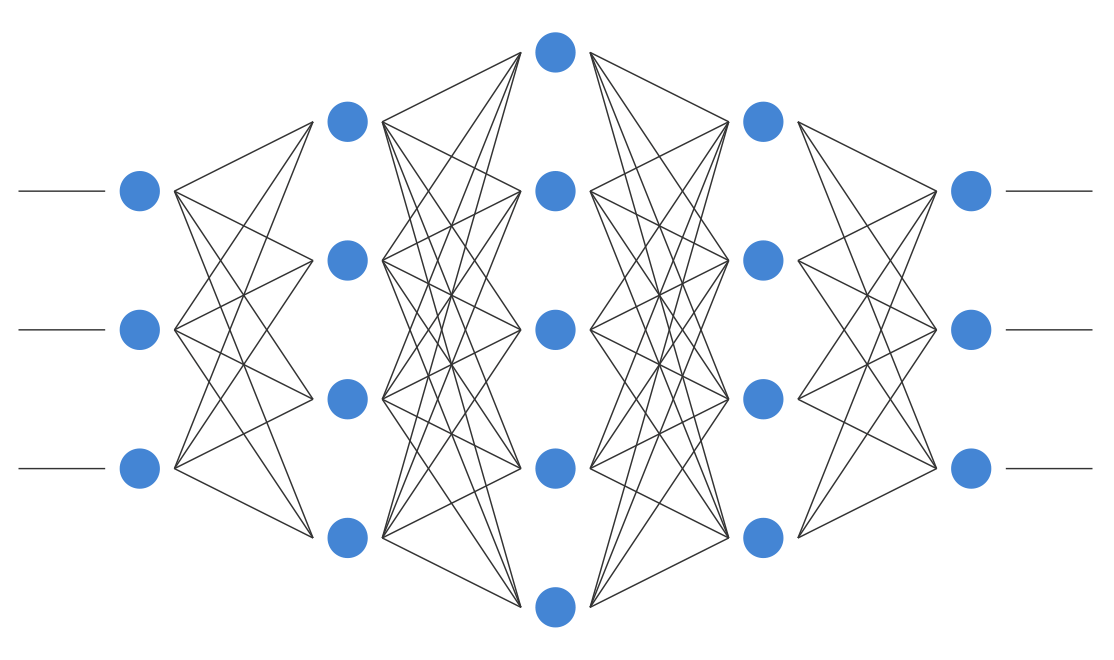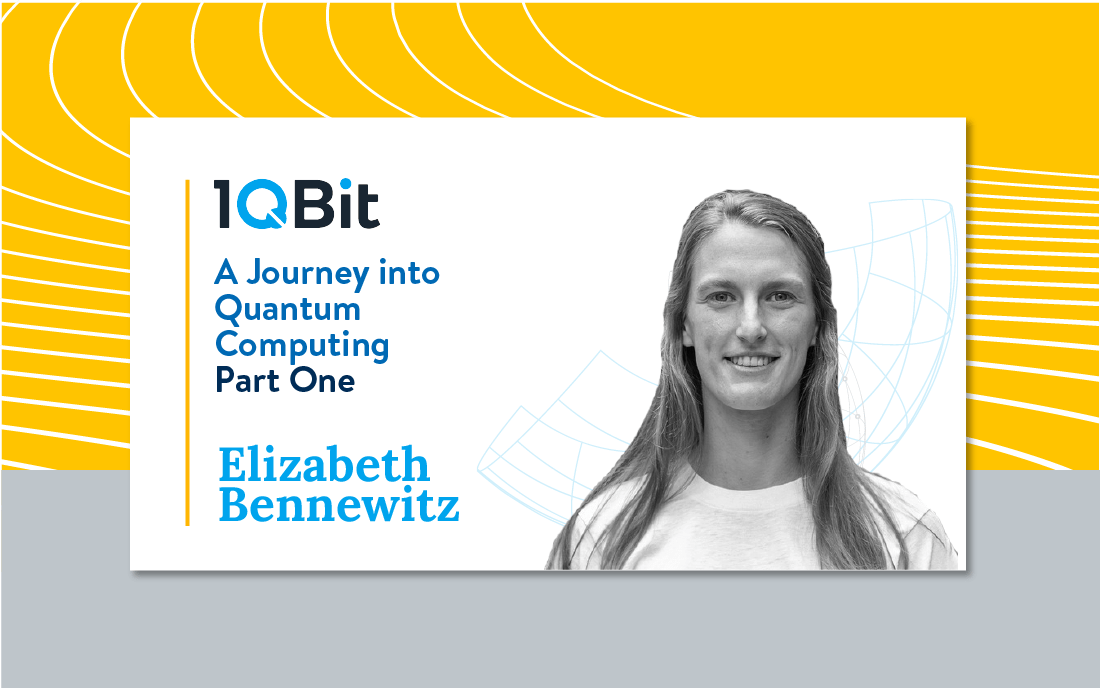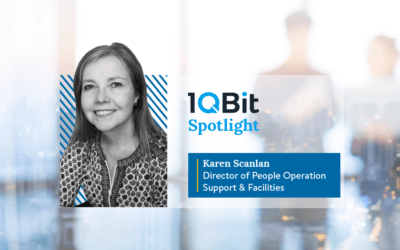Fresh thinking and new perspectives are important in the advancement of science and technology research. Elizabeth Bennewitz is a quantum computing and machine learning researcher at 1QBit who has an important role in conducting impactful research. Elizabeth’s story is a good example of the path a researcher might take to become involved in both academia and industry.
"I love that I can apply concepts I learned in my physics classes to industry research. Because of my research opportunity at 1QBit, I became committed to studying quantum computing, and how it can be used to study physics."
From Curiosity to a Career Path
“From a young age,” Elizabeth says, “I was fascinated by space, stars, and black holes because they challenged my understanding of the world around me. My curiosity for extreme phenomena and my knack for problem solving attracted me to physics.”
Today, Elizabeth’s fascination for extreme phenomena continues to drive her study of physics. She is especially drawn to quantum computing because it changes how one thinks about information and computing by harnessing quantum effects in nature. “I love that we can use the strange, non-intuitive behaviour of quantum systems to build a revolutionary new computer that promises to solve problems that cannot be solved with conventional computers,” she reflects.
To reach this insight took time. Her curiosity led her to study physics and math at Bowdoin College in Maine where she excelled as a student. There, her work ethic allowed her to slowly turn her childlike curiosity into a viable career path. Elizabeth related that it was because of the supportive community at Bowdoin that she dedicated herself to pursuing a career involving physics.
She enjoyed her physics classes because she loved the problem solving challenge. “But,” she admits, “at the time, I didn’t really know what I could do with physics after my undergrad. It wasn’t until sophomore year that I studied Einstein’s theory of relativity that I really dedicated myself to pursuing physics. Learning about the geometry of space-time reminded me about my fascination for extreme objects that challenge my physical intuition.” Soon after taking this course, she had an opportunity to conduct summer astrophysics research, which led her to India.
Even Black Holes Can Dance
With her new-found interest in astrophysics, Elizabeth was eager to experience the diversity of the international physics community. The following spring, she was accepted to study physics and Hindi at St. Stephen’s College in New Delhi, India.
“While at St. Stephen’s,” she says, “I became interested in staying for the summer to study gravitational waves and relativistic astrophysics at the International Center for Theoretical Sciences (ICTS) in Bangalore, India.”
While at ICTS, Elizabeth studied gravitational wave detectors to understand how binary black hole (BBH) systems are formed. These systems occur when two black holes orbit one another, locked in a sort of “cosmic dance”.

Figure: Illustration of a binary black hole system
As the black holes move, they emit energy in the form of gravitational waves—fluctuations in space-time itself. Information like their orbit, mass, and location in the sky is encoded in these gravitational waves—making each one unique. Elizabeth researched how one could detect these unique signatures to better understand how BBH systems are formed.
Leaping into Quantum Computing
After an unforgettable summer internship in India and nearing the end of her undergraduate degree, Elizabeth applied for graduate school at the Perimeter Institute for Theoretical Physics in Waterloo, Ontario.
“I was drawn there because of its unique course structure, its international physics community, and its full breadth of physics courses,” she reflects. It was because of the variety of courses and exploratory environment that she started to delve into quantum physics.
In one particular course, Machine Learning for Many-Body Systems, she learned how machine learning and neural networks are good tools for studying quantum behaviour of many-body systems—microscopic systems of many interacting particles.

Figure: Illustration of a neural network
Neural networks are algorithms inspired by the connections in the human brain that serve to recognize relationships between big datasets. She explains, “What I learned there gave me the background to start research with 1QBit and quantum computing in general.”
Her first opportunity to participate in quantum computing research was through a collaboration between the Perimeter Institute and 1QBit to study the optimization of quantum circuits—the building blocks of quantum computers. Current quantum algorithms for studying many-body quantum systems require optimizing these circuits. “This research introduced me to the challenges of quantum computation and how we can explore ways to improve the simulation of quantum systems,” she notes.
Simulating these systems using quantum computers is a promising application for current quantum devices. But, such devices are very limited by the effects of noise—that is, external disturbances that cause errors. To obtain meaningful results from a quantum computer, the effects of noise must be lessened. Mitigating the effects of noise as much as possible without imposing a large overhead of quantum resources is known as error mitigation.
For her master’s thesis, Elizabeth worked with Pooya Ronagh, Head of the Hardware Innovation Lab at 1QBit and Research Assistant Professor at the Institute for Quantum Computing. Her thesis involved developing a new method for error mitigation that uses machine learning to improve the representation of ground states using a quantum computer.
Ground states are the lowest energy states in a quantum system. In nature, particles tend to exist in their ground states, and characterizing these states is important for understanding quantum systems. Elizabeth’s work can also be used to compute other important characteristics of the quantum system, like its degree of entanglement or its magnetization.

Figure: Quantum entanglement
During her education, she learned how to use cutting-edge computing tools—like neural networks in machine learning, mentioned earlier. “I love that I can apply concepts learned in my physics classes to industry research,” Elizabeth reflects. “Because of my research opportunity at 1QBit, I became committed to studying quantum computing, and how it can be used to study physics.”
In the next part of this series, Elizabeth’s internship at 1QBit and more on her exciting research will be highlighted. To keep up with this series, as well as other exciting content related to advanced and quantum computing research, subscribe to the 1QBit Blog.




